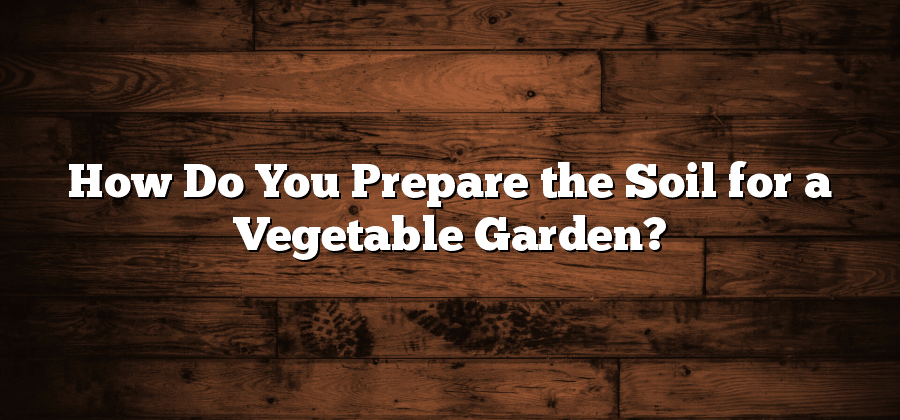Assessing Soil Quality: Understanding Your Garden’s Foundation
Assessing the quality of your garden’s soil is an essential first step towards creating a thriving and productive garden. By understanding the foundation of your garden – its soil – you can better tailor your gardening efforts to meet its specific needs. The condition of your soil will determine the success of your plants, as it affects their root development, nutrient uptake, and overall health.
To assess your soil quality, start by observing its texture and structure. A well-drained soil should have a crumbly texture that allows water to flow through easily, while also retaining enough moisture for the plants. Take note of the color as well; a dark, rich color indicates good organic matter content, which is vital for fertility. Another important factor is the soil’s pH balance, which affects the availability of nutrients to your plants. pH levels can vary depending on the type of plants you want to grow, so testing the soil’s acidity or alkalinity is crucial in determining whether any adjustments need to be made.
Clearing the Ground: Removing Debris and Weeds
Clearing the ground of debris and weeds is an important initial step in preparing your garden for optimal plant growth. Before you can assess the soil quality, it is crucial to create a clean and clear growing space. Begin by removing any large debris such as rocks, sticks, or other unwanted materials that may impede the growth of your plants. These items can hinder root growth and create obstacles for proper water drainage. It is essential to create a clean slate for your garden to thrive.
In addition to removing debris, it is crucial to tackle any weeds that may have taken root in your garden. Weeds compete with your desired plants for nutrients, water, and sunlight, ultimately hindering their growth. By clearing the ground of weeds, you are ensuring that your plants have the best chance to flourish without unnecessary competition. Be diligent in identifying and pulling out any weeds, making sure to remove them entirely, roots and all. Taking the time to clear the ground of weeds will set the stage for a healthier and more productive garden.
Soil Testing: Determining Nutrient Levels and pH Balance
A crucial step in understanding your garden’s foundation is assessing the nutrient levels and pH balance of the soil. Soil testing provides valuable information about the soil’s fertility and acidity, helping gardeners make informed decisions about fertilization and plant selection. By determining the nutrient levels, gardeners can identify any deficiencies or excessive amounts, allowing them to adjust the soil accordingly to create optimal conditions for plant growth.
First and foremost, soil testing provides insights into the fundamental nutrients needed for plant growth, such as nitrogen, phosphorus, and potassium. These macronutrients play essential roles in various plant processes, from enhancing leaf development to promoting root growth and flower formation. By gauging the nutrient levels, gardeners can determine whether their soil lacks certain nutrients and take appropriate steps, such as adding fertilizer, to amend the deficiency. Conversely, excessive nutrient levels can be equally detrimental to plants, causing imbalances and adversely impacting their health. Soil testing allows gardeners to detect such imbalances and take corrective measures, creating a more favorable environment for plants to thrive.
Adding Organic Matter: Enhancing Soil Structure and Fertility
Organic matter plays a critical role in improving soil structure and fertility. By adding organic materials, such as compost, manure, or cover crops, gardeners can enhance the overall health and productivity of their soil.
One of the primary benefits of incorporating organic matter is improving soil structure. Organic materials act as a binder, helping to create and maintain pore spaces within the soil. These pore spaces allow for better air and water movement, which are essential for root development and nutrient uptake. Additionally, organic matter can increase soil aggregation, making the soil easier to work with and less prone to erosion. By enhancing soil structure, gardeners can set the stage for healthier plants and improved yields.
In addition to improving soil structure, organic matter also plays a key role in enhancing soil fertility. As organic materials decompose, they release essential nutrients into the soil. These nutrients, including nitrogen, phosphorus, and potassium, are then readily available for plant uptake. Organic matter also improves the soil’s ability to retain these nutrients, reducing the risk of leaching and runoff. Furthermore, organic matter can act as a buffer, helping to maintain the soil’s pH balance and preventing nutrient imbalances. By adding organic matter to the soil, gardeners can ensure that their plants have access to the nutrients they need for optimal growth and development.
Composting: Creating Nutrient-Rich Soil Amendments
Composting is an effective method for creating nutrient-rich soil amendments that can greatly enhance the fertility and structure of your garden soil. By decomposing organic materials such as food scraps, yard waste, and newspaper, you are able to create a nutrient-dense compost that can be used to enrich the soil in your garden beds.
The process of composting involves creating a balanced mix of organic matter, moisture, oxygen, and heat. It is important to maintain the correct ratio of green materials (such as fruit and vegetable scraps) to brown materials (such as dry leaves and twigs) in order to promote decomposition. Additionally, turning the compost regularly helps to aerate the pile and speed up the decomposition process. Over time, the organic materials will break down into a dark, crumbly substance that is rich in nutrients and beneficial microorganisms. This nutrient-rich compost can then be spread over your garden beds to improve soil fertility, increase moisture retention, and provide essential nutrients for healthy plant growth.






